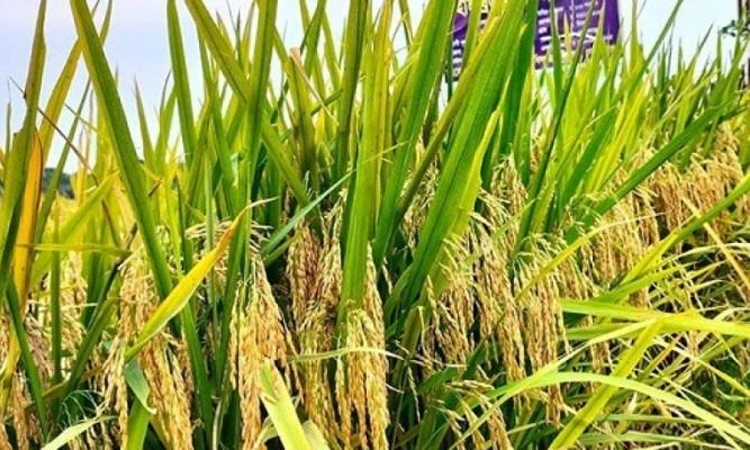News Flash
News Flash

GOPALGANJ, Nov 22, 2025 (BSS) - The newly developed high-yielding rice variety BRRI Dhan-103 has produced the highest Aman-season yields in the district, raising optimism for expanded cultivation and improved food security across the country.
Developed by the Bangladesh Rice Research Institute (BRRI), this short-duration variety has quickly gained popularity among farmers due to its strong resistance to major diseases and insects, as well as its superior productivity.
According to BRRI officials, BRRI Dhan-103 has yielded 2 to 4 maunds more per bigha than conventional varieties in the region, with farmers also reporting excellent straw production.
The variety's rapid growth and minimal pest susceptibility are contributing to its expanding cultivation every year.
Dr. Amina Khatun, head and chief scientific officer of BRRI's Gopalganj Regional Office, said that demonstration plots were established across Gopalganj, Bagerhat and Narail during the current Aman season. Results from these plots confirmed the variety's exceptional performance.
A trial harvest in the field of farmer Md. Aroj Ali Khandaker of Ghonapara village in Sadar upazila showed a yield of 22 maunds per bigha, validating expectations of high productivity.
"BRRI Dhan-103 is significantly contributing to national rice output and positively transforming the socio-economic conditions of farmers," Dr. Khatun said.
Dr. Mohammad Shahidullah, principal scientific officer at the regional office, explained that BRRI Dhan-103 possesses all the desirable traits of modern Ufshi varieties.
"The grains are long and slender, with a thousand-grain weight of 23.7 grams. It contains 8.3% protein and 24% amylose. The average yield is 6.2 tons per hectare, and with proper management, it can reach up to 7.98 tons," he said.
The variety matures in 128-133 days and has been under cultivation in the three districts since 2023, consistently delivering top yields.
The improved productivity is enabling farmers to convert single-crop land into two-crop land, and double-crop land into three-crop land, significantly increasing total annual production.
Abdullah Al Momin, scientific assistant at the Gopalganj office, added that BRRI Dhan-103 is well-suited for rain-fed Aman cultivation, following standard Ufshi transplanting methods. Seed sowing between June 15 and July 7 ensures optimal results.
"This variety is almost free from disease and insect attacks, which reduces production costs. We have prepared enough seeds to support even wider cultivation next season," he said.
Field officials are also witnessing rising enthusiasm among farmers.
Raj Kumar Roy, deputy assistant agriculture officer of Gobara union, reported that the area under BRRI Dhan-103 increased from 10 hectares in 2023 to 27 hectares in 2024 in his union alone.
"The variety has already become popular due to its profitability. With adequate seed supply, cultivation can be further expanded next year," he added.
Local farmer Md. Aroj Ali Khandaker shared his personal success story, noting that he previously harvested just 4-5 maunds per bigha from traditional Aman, taking 180 days to mature. After switching to modern Ufshi varieties, the yield improved to 18-20 maunds-but BRRI Dhan-103 surpassed all expectations.
"This year, I got 22 maunds per bigha in just 130 days, with no insect attacks or irrigation costs. I earned more with lower investment, and after harvesting, I can grow 3 to 4 crops on the same land," he said.
With its high yield potential, shorter growing period, and cost efficiency, BRRI Dhan-103 is emerging as a game-changing variety for Aman farmers, reinforcing hopes for strengthened food security and improved livelihoods nationwide.